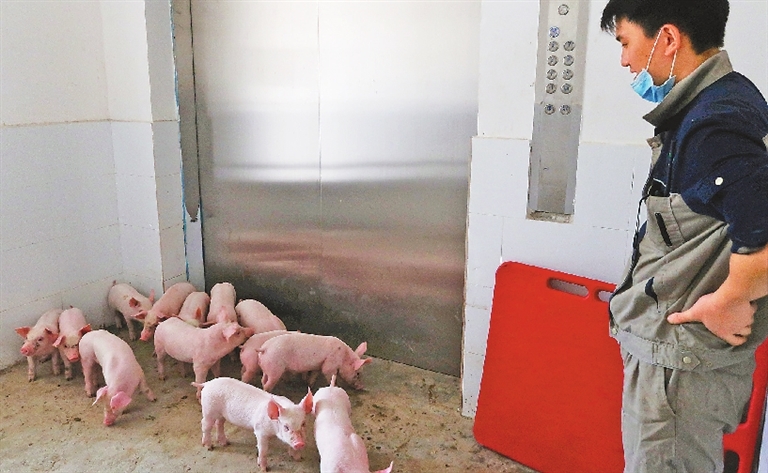
ON Yaji Mountain in southern China, they are checking in the sows a thousand head per floor in high-rise “hog hotels.” Privately owned agricultural company Guangxi Yangxiang Co. is running two seven-floor sow breeding operations, and is putting up four more, including one with as many as 13 floors that will be the world’s tallest building of its kind. Hog farms of two or three floors have been tried in Europe. Some are still operating, others have been abandoned, but few new ones have been built in recent years, because of management difficulties and public resistance to large, intensive farms. Now, as China pushes ahead with industrialization of the world’s largest hog herd, part of a 30-year effort to modernize its farm sector and create wealth in rural areas, companies are experimenting with high-rise housing for pigs despite the costs. The “hotels” show how far some breeders are willing to go as China overhauls its farming model. “There are big advantages to a high-rise building,” said Xu Jiajing, manager of Yangxiang’s mountain-top farm. “It saves energy and resources. The land area is not that much but you can raise a lot of pigs.” Companies like Yangxiang are pumping more money into the buildings — about 30 percent more than on single-story modern farms — even as hog prices in China hold at an eight-year low. For some, the investments are too risky. Besides low prices that have smaller operations culling sows or re-thinking expansion plans, there is worry about diseases spreading through such intensive operations. But success for high-rise pig farms in China could have implications across densely populated, land-scarce Asia, as well as for equipment suppliers. “We see an increasing demand for two or three-level buildings,” said Peter van Issum, managing director of Microfan, a Dutch supplier that designed Yangxiang’s ventilation system. Microfan also supplied a three-storey breeding operation, Daedeok JongDon GGP Farm, in South Korea. “The higher ones are still an exception, but the future might change rapidly,” van Issum said. Yangxiang will house 30,000 sows on its 11-hectare site by year-end, producing as many as 840,000 piglets annually. That will likely make it the biggest, most-intensive breeding farm globally. A more typical large breeding farm in northern China would have 8,000 sows on around 13 hectares. In Fujian Province, Shenzhen Jinxinnong Technology Co. also plans to invest 150 million yuan (US$24 million) in two five-story sow farms in Nanping. Two other companies are building high-rise hog farms in Fujian as well, according to an equipment firm involved in the projects. Thai livestock-to-retail conglomerate CP Foods is also building four six-story pig units with local firm Zhejiang Huatong Meat Products Co. in Yiwu, a Chinese city near the large populations around Shanghai. Yangxiang spent 16,000 yuan per sow on its new farm, about 500 million yuan in total, not including the cost of the pigs. (SD-Agencies) | 
